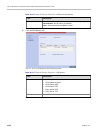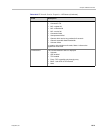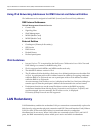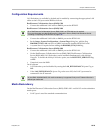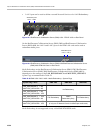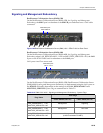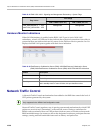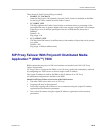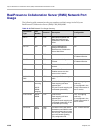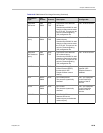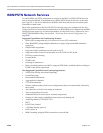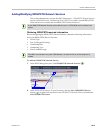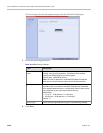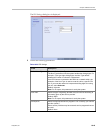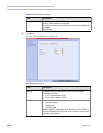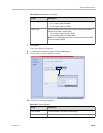
Polycom RealPresence Collaboration Server (RMX) 1500/2000/4000 Administrator’s Guide
16-38 Polycom, Inc.
RealPresence Collaboration Server (RMX) Network Port
Usage
The following table summarizes the port numbers and their usage in the Polycom
RealPresence Collaboration Server (RMX) 1500/2000/4000:
Table 16-23 RMX Network Port Usage Summary
Connection
Type
Port
Number
Protocol Description Configurable
HTTP 80 TCP Management between the
RMX and RealPresence
Collaboration Server Web
Client.
No
HTTPS 443 TCP Secured Management
between the RMX and
RealPresence Collaboration
Server Web Client.
No
DNS 53 TCP Domain name server. Can be disabled in the
IP Network Service.
DHCP 68 TCP Dynamic Host Configuration
Protocol.
Can be disabled in the
IP Network Service.
SSH 22 TCP Secured shell. It is the RMX
terminal.
No
NTP 123 UDP Network Time Protocol.
Enables access to a time
server on the network.
No
H.323 GK
RAS
1719 UDP Gatekeeper RAS messages
traffic.
No
H.323 Q.931 1720 -
incoming
;
49152-
59999 -
outgoing
TCP H.323 Q.931 call signaling.
Each outgoing call has a
separate port.
The port for each outgoing call
is allocated dynamically.
Yes - for outgoing
calls only.
It is configured in the
Fixed Ports section of
the IP service.
H.323 H.245 49152 -
59999
TCP H.245 control.
Each outgoing call has a
separate port.
The port for each outgoing call
is allocated dynamically. It can
be avoided by tunneling.
Yes - for outgoing
calls only.
It is configured in the
Fixed Ports section of
the IP service.
SIP server 5060
60000
UDP,
TCP
Connection to the SIP Server.
Sometimes port 60000 is used
when the system cannot reuse
the TCP port. This port can be
set in the Central signaling
(CS) configuration file.
Yes - in the IP service.



